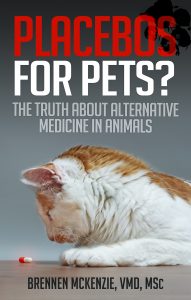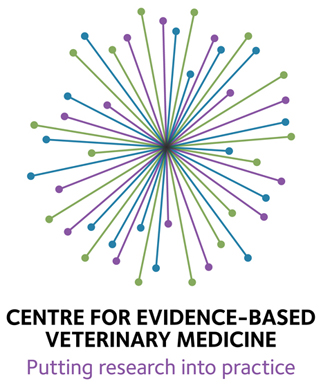I recently discussed, and corrected, some comments Dr. Shawn Messonier made on his blog concerning Alison Averis’ post here illustrating how personal experience can be unreliable in evaluating whether a medical treatment works or not. Dr. Messonier has responded to some of the comments I made in that post, as usual trying to warp them to fit his pro-CAM “talking points.” He begins by dredging up that vacuous marketing label of “healthcare choice” which I’ve discussed before.
While most doctors and healthcare providers are open to natural care and support your choice and the type of medicine you desire, sadly there are still many that will come up with any argument and do anything to prove to you that your choice is wrong.
This argument presumes that giving people more therapies to chose from, even if they are useless or even harmful, is somehow a good thing. It also suggests that informing people about what reliable, scientific evidence is and how they can use it to help them make good choices for their pets is somehow limiting the freedom or autonomy of pet owners.
I offer choices to my clients every day, and I expect them to be full partners in caring for their pets. I do not offer them the option of psychic diagnosis or therapy, animal sacrifice to propitiate the gods of health, or homeopathy because those would be false choices of no real value. And if there is a therapy that I believe might be beneficial but about which there is significant uncertainty, I give them that information so their choices will be informed. Adding meaningless buzzwords like “natural” to what one does, regardless of whether there is reliable evidence to support that it is safe or effective, is purely a marketing strategy, not a means to give greater autonomy or choice to pet owners.
Dr. M then goes on to quote my recent post and respond to specific bits and pieces.
1.“Doctors rely on their personal experiences, intuition and, anecdotes as evidence to justify implausible or simply “made up” theories and practices.”
This is partly true, but it’s also true for doctors who practice conventional medicine as well. In the good old days before strictly controlled, well-funded (usually by the drug companies seeking approval for their latest drug) studies, ALL doctors learned and shared knowledge based upon their personal experiences with various medications (both natural and conventional.) There is nothing wrong with learning from experience and sharing these experiences. Yes, we all would love to have well researched studies “proving” what we already know to be factually correct. However, the company funding the study determines which studies are ultimately published. While most companies are ethical, there have been some well-publicized incidents of companies ignoring negative studies and only publishing positive studies showing benefits for their medications.
*Evidence is evidence. Either a treatment works or it doesn’t. While skeptics selectively ignore evidence showing the effectiveness of natural therapies, they never seem to ignore evidence showing natural therapies don’t work.
Several problems here. First, Dr. M is unfortunately correct that many doctors practicing primarily conventional medicine rely unduly on anecdote and personal experience. This does not, of course, mean it is the right approach, and I hope that the practice of science and evidence-based medicine will come to be the predominant approach to medical knowledge among all veterinarians. It is certainly more likely to take hold among those who already practice medical approaches that are based on sound scientific reasoning and evidence than among those who, like Dr. M, confidently assert the value of therapies that are unscientific in their underlying premises or without good supporting evidence. I certainly do not claim perfection in conventional medicine, I simply advocate for all of us as veterinarians and pet owners to recognize our limitations and attempt to do better by turning to the most reliable evidence available concerning the therapies we use.
The underlying problem with the CAM approach to knowledge is explicit in this statement. Dr. M pays lip service to scientific evidence, but he clearly views it as icing on the cake, “‘proving’ what we already know to be factually correct.” The arrogance of this kind of self-certainty is breathtaking. Science and the knowledge it generates is not merely a way of better promoting and marketing what we already believe. It is a way of finding the truth despite our own limitations and cognitive biases. There can be no learning or improvement without the recognition that our knowledge is incomplete and flawed, and yet Dr. M clearly does not believe this. To him, science is simply another tool in the promotion of his beliefs, not a way to find out what is true and what isn’t.
As far as the issue of funding bias and publication bias, there is no question these are real problems. They do not, however, invalidate the whole enterprise of scientific research, as the good doctor suggests. There is plenty of research evidence available, both from industry-funded research and from other sources (academia, government, private clinical practices, etc), and acknowledging that there are weakness in some of this research is not license to ignore it and simply do what we feel like doing.
“Evidence is evidence” is nonsense. There are levels of evidence ranging from the least reliable (personal opinion and experience) to the most reliable (multiple consistent well-designed and conducted clinical trials). The problem many CAM practitioners have is reading the pyramid of evidence upside down:
Undoubtedly, we all suffer from confirmation bias, so it is true we attend to evidence that supports our beliefs more than evidence that disconfirms them. This is a major reason why scientific evidence is more reliable than anecdote and personal experience, so raising the issue simply undermines Dr. M’s own approach. If he has specific evidence for particular therapies he thinks I am ignoring, his is of course always welcome to provide it for consideration.
2.“I would be very interested in how much “objective” measuring of outcomes doctors using natural therapies actually do. They often seem to imagine they can “eliminate” subjective owner assessments in practice, but I find this hard to believe.”
Let me quickly answer this objection by sharing with you two recent cases. One involves a dog with elevated kidney enzymes that did not respond to treatment by his prior conventional veterinarian. The other case involves a cat with elevated liver enzymes and also did not respond to treatment by her conventional veterinarian. After using several natural therapies, follow-up blood tests showed that the kidney and liver enzymes returned to normal.
There is nothing subjective about this. The laboratory, which did not know what kind of therapy I used on these patients, reported the results objectively.
Even in trying to show how objective his medical practice is, Dr. M cannot help but rely on anecdotes to prove his point. Of course, the flaw here is glaringly obvious. He assumes that improvements in the clinical laboratory values measured was due to his therapy. This is the post hoc ergo propter hoc fallacy, and it ignores the fact that medical problems can improve for all sorts of reasons other than the ones we assume. Some possibilities include:
1. Self-Limiting Disease Many diseases are self-limiting. If the condition is not chronic or fatal, the body’s own recuperative processes usually restore the sufferer to health. Thus, to demonstrate that a therapy is effective, its proponents must show that the number of patients improved exceeds the number expected to recover without any treatment at all. Without detailed records of successes and failures for a large enough number of patients with the same complaint, someone cannot legitimately claim to have exceeded the norms for unaided recovery.
2. Waxing and Waning Chronic Disease (also known as Regression to the Mean) Such conditions as arthritis, allergies, and gastrointestinal problems normally have “ups and downs.” Naturally, clients tend to seek therapy during the period or greatest clinical symptoms. In this way, a treatment will have repeated opportunities to coincide with upturns that would have happened anyway.
3. Multiple Concurrent Therapies If improvement occurs after a pet has had several interventions, and probably other unremarked changes in the owner’s treatment of the sick pet, one or another of the changes often gets a disproportionate share of the credit or blame. Frequently, the latest in a series of interventions or the newest thing tried is credited with improvement even though many things were done.
The overall tone of Dr. M’s response is that I am somehow on a crusade against “natural” medicine. That cannot be true for the simple reason that “natural medicine” is a meaningless term filled with assumptions and the naturalistic fallacy. I am actually on the same crusade as Dr. M. I am dedicated to giving my patients the best, most effective care and the highest quality of life possible, and to protecting them from things that are useless or harmful. The difference is not one of intention, but one of philosophy. I believe there is such a thing as truth and that the best way to care for our pets is to know what is true and what is false about the therapies we offer. I believe that we often don’t know what we think we know, and that our confidence in our own intuition and judgments is often excessive and unjustified. I believe that science is the most powerful tool we’ve ever invented for separating truth from mythology, and that with it we have done, and will continue to do, better in medicine that we did in all the thousands of ears we relied exclusively on storytelling, respect for tradition and authority, and random trial and error to decide what works and what doesn’t.
If this blog is controversial or challenging, it is because when I find the evidence doesn’t support the claims people make about veterinary medicine I have the temerity to say so. I try to do so in a civil way, and I try to focus on the problems of reasoning and evidence rather than personality, though I won’t claim I never give in to irritation at the persistence of mischaracterization and misinformation in some people’s arguments. But helping pet owners to take better care of their companions isn’t accomplished by ignoring the evidence or by letting unsupported claims or misleading arguments stand, and I make no apologies for trying to help people filter the information available to them and separate the strong, reliable claims from the weak or thoroughly bogus ones. I’m happy to discuss what the evidence is and what it means with anyone, but Dr. M prefers simply to insinuate and allege motives, to throw around meaningless marketing terms, and to talk about anything but the specific evidence for or against the therapies he advocates.









